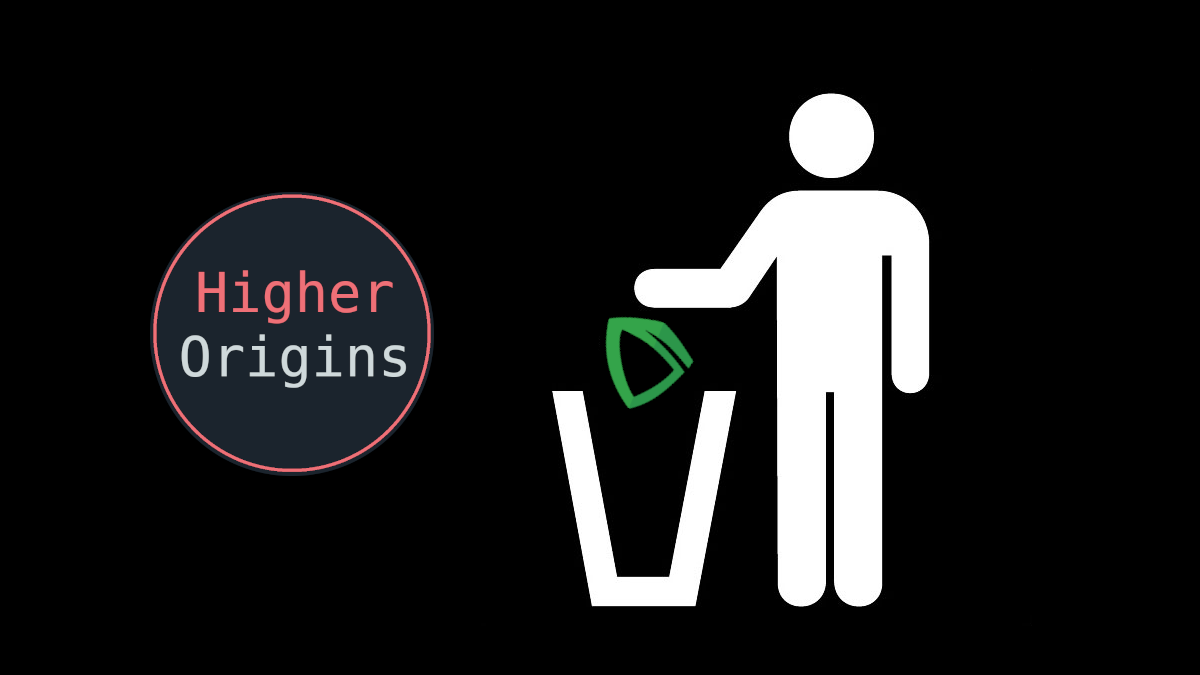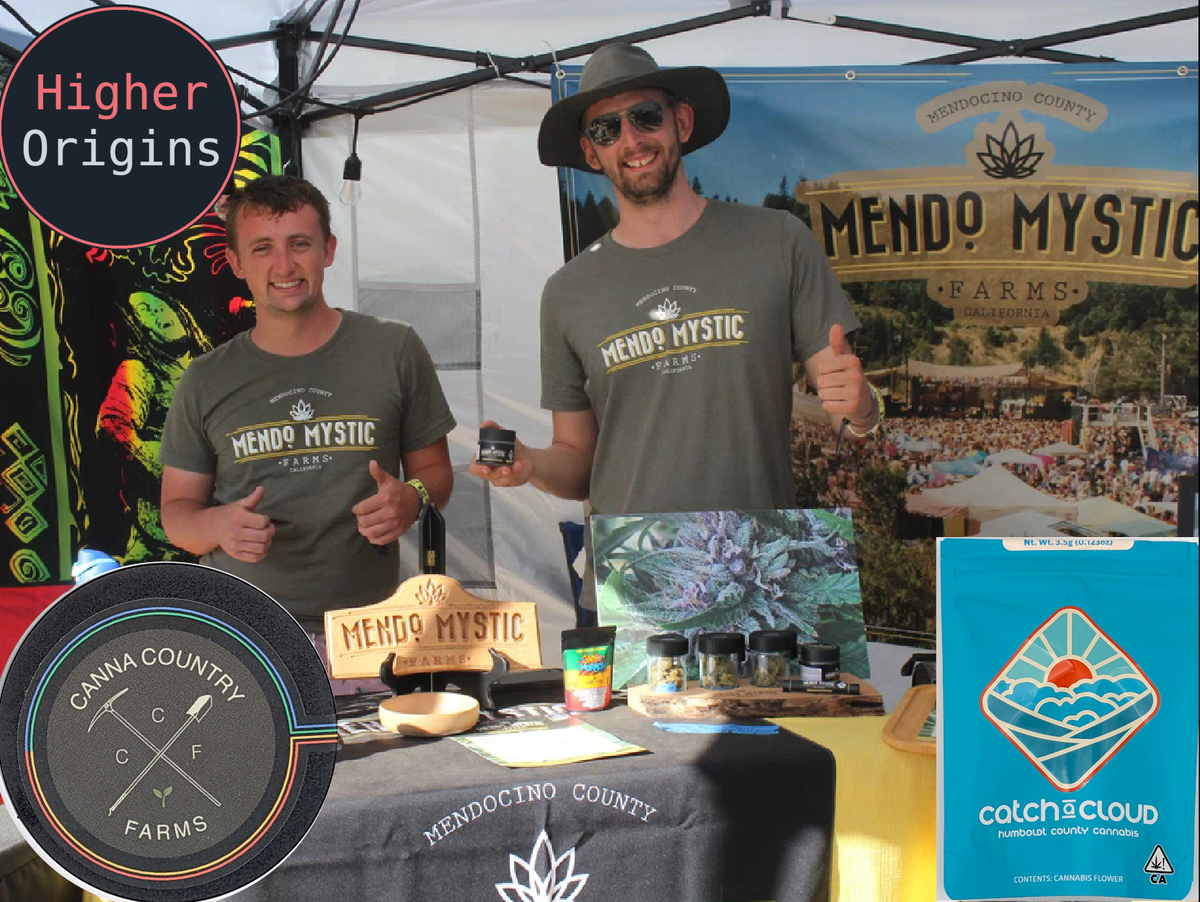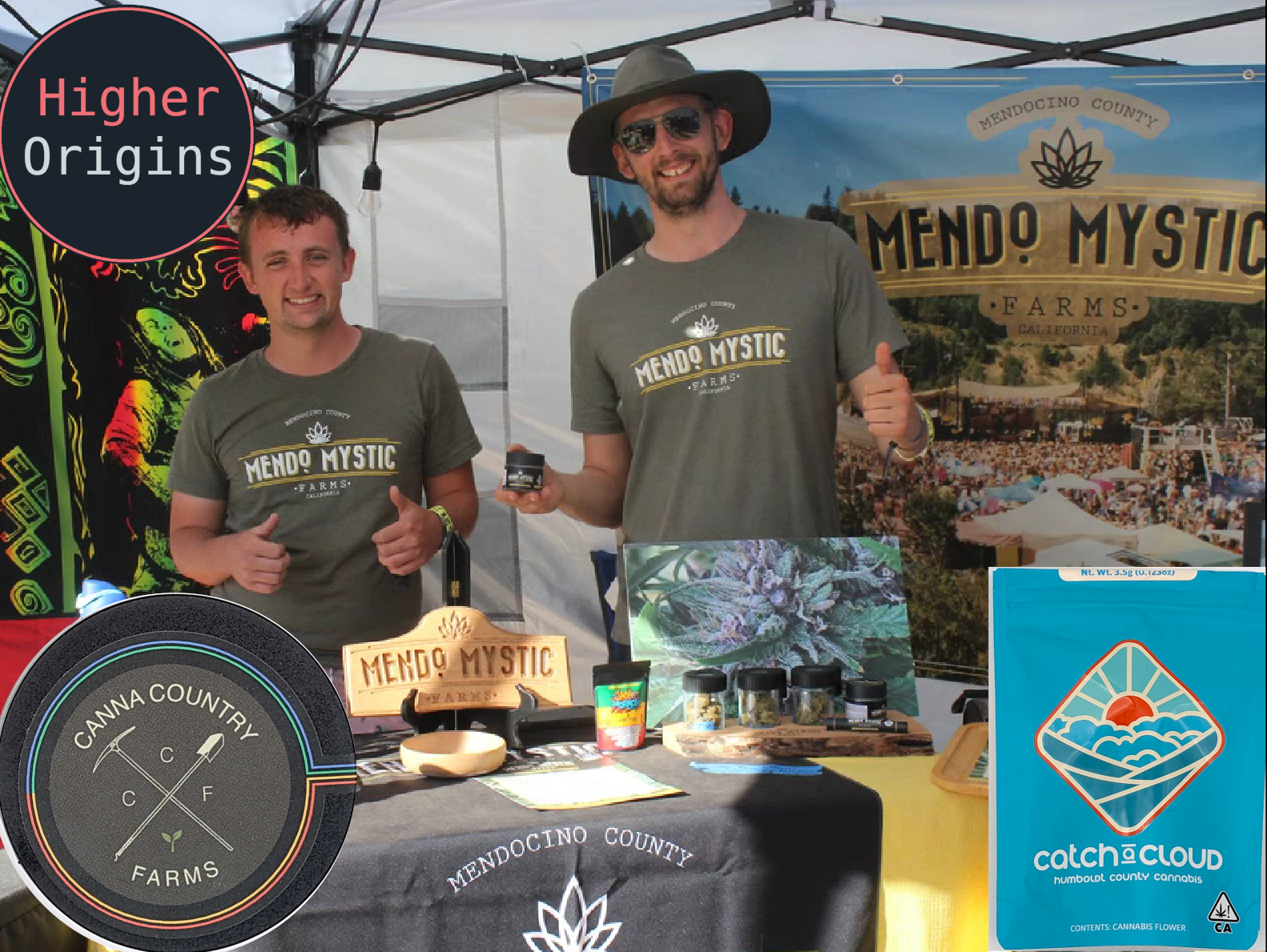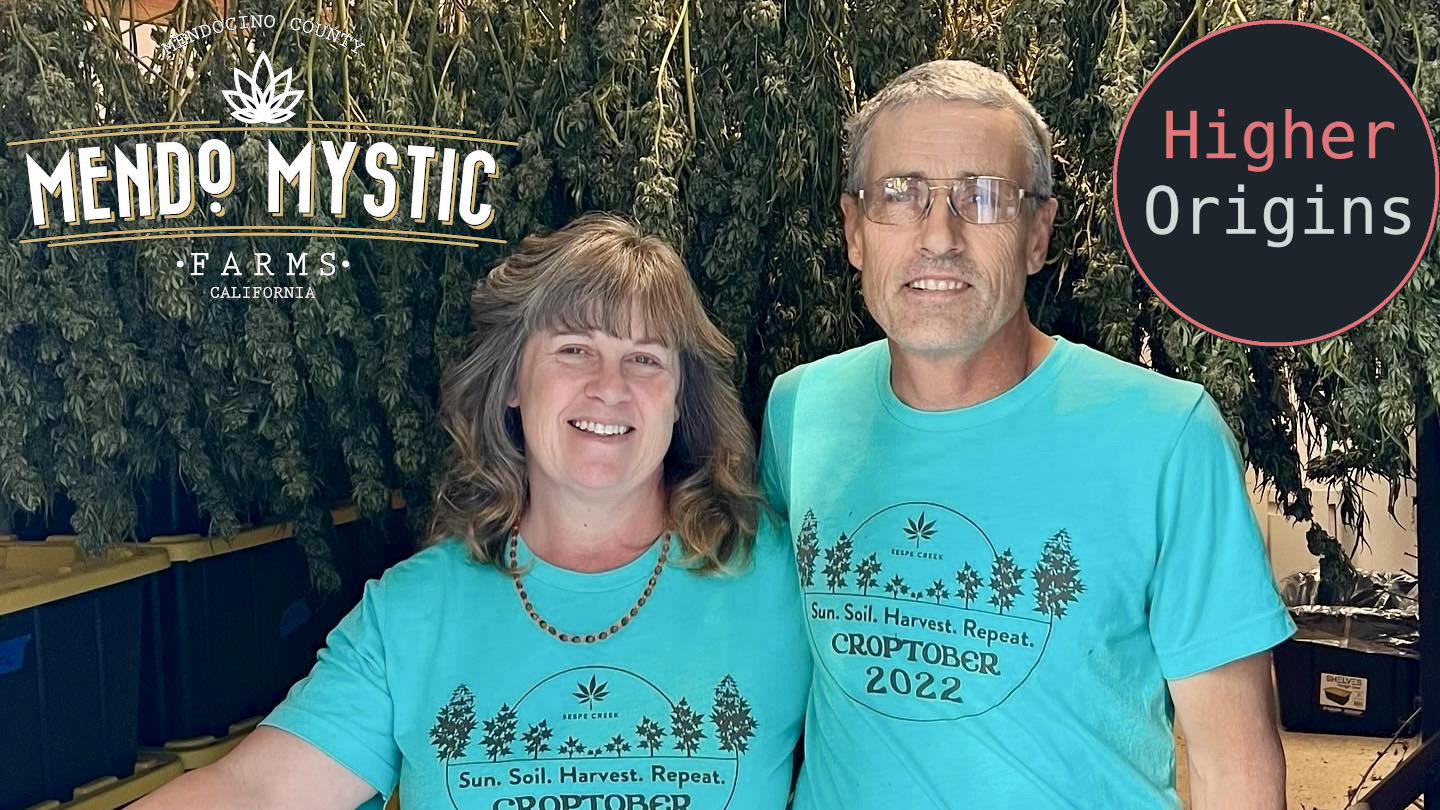Big VS Small has always been a central theme of the California legal cannabis industry. We see it every day in media articles and social media posts, and hear it from friends and neighbors at events and backyard smoke sessions. The prevailing, and largely true, narrative is that larger businesses have cornered the market through vast investment, which allows them to influence local land use rules, buy out the competition, and flood the market with literal tons of low-priced weed. Maybe it’s just our Emerald Triangle bias, but amongst this largely justified panic and outrage, we see a distinct lack of discussion of the potential and scale of the small farms. The purpose of this article is to use the numbers to illustrate that while smaller farms are battered and bruised, they still have massive potential and are in a fantastic position to dominate the market on their own terms.
How we define business sizes:
Our basic method of sorting businesses by size is by counting the number of licenses (of all kinds) associated with their registered business name. Naturally, there is a certain amount of error on these numbers because there are companies out there that are made of many different smaller licensed businesses doing business under various names.
Small: We consider businesses with 1-5 total licenses to be small. This is the vast majority of cannabis businesses in the state.
Medium: Businesses with 5-10 licenses.
Large: Businesses with 10-30 licenses
Huge: Anything above thirty. These are almost entirely in central California, and may include licenses that while legal, are uncultivated. This is due to some huge farms licensing more land than they actually have the funding to cultivate.
Business size is really only a valuable indicator for cultivation, as manufacturing and commercial licenses do not clearly represent the scale of the business. One small farm in rural Humboldt that has its own distro license for its own product and one huge LA warehouse full of 5 tons of flower would look the same in the data.
Let’s take a look at how these businesses measure up by cultivation space

The data in this article disregards nursery space, as it does not indicate actual production and is not size constrained
Some insights on the small farm industry:
Of the 40 counties with legal cultivation, in 29 of them the amount of small farm canopy is larger than medium, large, and huge businesses put together. (That’s 72.5%!)
The top two counties for small growing, Humboldt and Mendocino, have more growth than all huge farms statewide combined.
The top 8 small farming counties have more square footage than statewide for medium, large, and huge licenses combined.
Small farms make up 91% of indoor grows, 64% of mixed light grows, and 46% of outdoor grows.
The average small farm, regardless of cultivation type, has 2 licenses, 10-15,000 Square feet of cultivation (under half an acre), and is either a mixed light or outdoor farm in the Emerald Triangle, or an indoor farm in LA.
58% of the state’s small farms are in the Emerald Triangle, accounting for 54% of the state’s total square footage.
Okay, fair is fair, let’s look at the bigger businesses out there:
Santa Barbara absolutely dominates the bigger business categories, with 17.3% of all medium/large/huge cultivation in the state. Humboldt comes in a distant second, with 5% of cultivation in the state for the same size businesses.
74% of bigger businesses grow outdoor, while 23% grow mixed light, and the remaining 3% are indoor.
The huge license category consists of 29 unique businesses with an average of 43 farms each, that collectively make up 21% of the state’s total crop area. Keep in mind that many of these businesses are likely owned by one umbrella company.
The large license category consists of 82 unique businesses with an average of 10 farms each, that collectively make up 12% of the state’s total crop area.
The medium license category consists of 167 unique businesses with an average of 3 farms each, that collectively make up 10% of the state’s total crop area.
Analysis:
Based on the above numbers, we can see clearly that small farms as a category do NOT have a population problem, or a production problem. Yet, despite their larger population, they consistently end up the losers in terms of market conditions. Why?
Wholesaling: Since the California legal system mandates the use of distributors, many small farms are at the mercy of middlemen in order to get their product to market. Underpayment, lack of payment, and poor communication are only some of the obstacles created by this structure. While there are some smaller farms that have been able to gain some form of commercial license to move their own product, this only makes up about 17.5% of the total population of small farms.
Branding: While it is possible for small farms to self-brand and present themselves to market on their own terms, this is an expensive and complicated process. Farming is hard work, and when your staff is a few people, there’s often not enough capacity to figure out packaging, labels, marketing, samples, and retail outreach. Most small farms never needed any of this in the past, and lack first hand experience with getting consumer packaged weed onto a shelf. Likewise, the economies of scale for jars, bags, labels, and boxes don’t work well when you only need a few thousand units at a time. Finally, with the vast majority of retailers in the state operating in big cities, rural farmers have a disadvantage of distance, and may have to drive hours at a time to establish a good relationship with retailers.
Social/Regional: Many small farms are started by those who were active to some degree in the legacy economy. They are overwhelmingly located in more rural areas of the state, far away from convenient access to the easy logistics and variety of services that are present in the cities. This isolation is usually by design and economic necessity- these areas became the heart of legacy cannabis cultivation due to their affordable land, distance from organized government paramilitaries, and the lack (or collapse) of viable economic opportunities in these areas. Now, this isolation makes it hard for these farms to access easy logistics, less profitable for buyers to come to them, and less trustworthy of interacting with the outside world.
Legal: Legal just means it’s illegal for those who can’t afford it, right? Well, that applies here. Running on thin or negative margins means you can’t afford to pay fines when your regional government decides to levy them, or hire lawyers to represent you when you get ripped off. Likewise, since the prohibitionist culture of law enforcement still runs deep on the other side of the blue line, there’s a much lower chance that cops will respond to help out small farms in the event they are victims of crime.
Political: Ultimately, cannabis was legalized in California via ballot measure at the will of the largely metropolitan liberal voting base, motivated by city dwelling politicians. In some jurisdictions, this completely goes against the values or financial interests of the local government. While state law legalized it, many regional governments didn’t, and those that did still may have a significant bias against the industry. This bias, in combination with the lack of legal oversight on many local governments, may explain why everything cannabis related is insanely expensive, slow, opaque, and bureaucratic. It’s by design, by obstructionist officials who still at heart just want to throw “all those dirty hippies” in jail.
Small farms also have a lot of advantages in the market, and it’s worth mentioning these- after all, they’ve hung on despite having the deck stacked against them all these years.
Illicit-market Sales: Despite the best/worst/mediocre efforts of the State, the cannabis economy has been successful for at least half a century, likely longer. Legalization caused serious ripples in the illegal market, but didn’t kill it, and it’s still going strong, right in plain sight, just as (if not more) accessible than it ever has been. Like it or not, support it or not, justify it or not, a nonzero population of legally licensed farms will sell on the illicit side of the economy to make ends meet. This illegal income has always been an alternative source of income for some farms, and having that option allows them to keep their businesses running despite shifting economic conditions. As long as legalization comes burdened with artificially imposed economic obstacles, this will continue.
Day Jobs and Economic Independence: While huge farms get hauled in front of their corporate investors and roasted if they lose money, small farms can always do what those corporate investors told them to do before legalization: get a job! If times are tough or a small farmer is having trouble paying the bills, they can always go back to their day job for a while. While white collar huge farm owners wouldn’t dream of putting the work boots on to keep the doors open, it’s just another shift for small farmers.
Community: As cliche as it sounds, there’s a lot of community collaboration involved in small cannabis farming. While many larger farms with monopolistic mindsets may keep their competition at arms length, smaller farms in many regions understand they’re in this together. Sure, not everyone is friends, but there’s enough community collaboration that deadlines can be extended, equipment can be shared, and homies can be hooked up. Why? Because in small communities, people’s personal connection can carry more weight than their market share. While a huge grower can only rely on his investors or retail income, a small farmer can rely on the fact that he’s a good honest guy trusted by his neighbors, who might be willing to lend him their tractor for the weekend for the price of a tank of diesel and a six pack.
Improvising: From day one, cannabis farming at the small scale has always been about making things work. Reuse, recycle, adapt, repurpose. A certain degree of clever self-reliance was baked into the early industry, and some of it survives to this day. While large corporate farms are slaves to their SOP’s and change management (which, to be fair, makes sense at their scale), small farms have been flexibly making it work for decades, and that ability is no small part of why they are still hanging on to this day.
In general, while we can’t deny that the market has serious problems, we strongly believe that small farms are still on a relatively strong footing. Anything that can lower their barriers to market entry could potentially be an existential threat to the big players in the industry. And, for the record, we would be stoked to see that happen.
Size isn't everything!
-Higher Origins




















